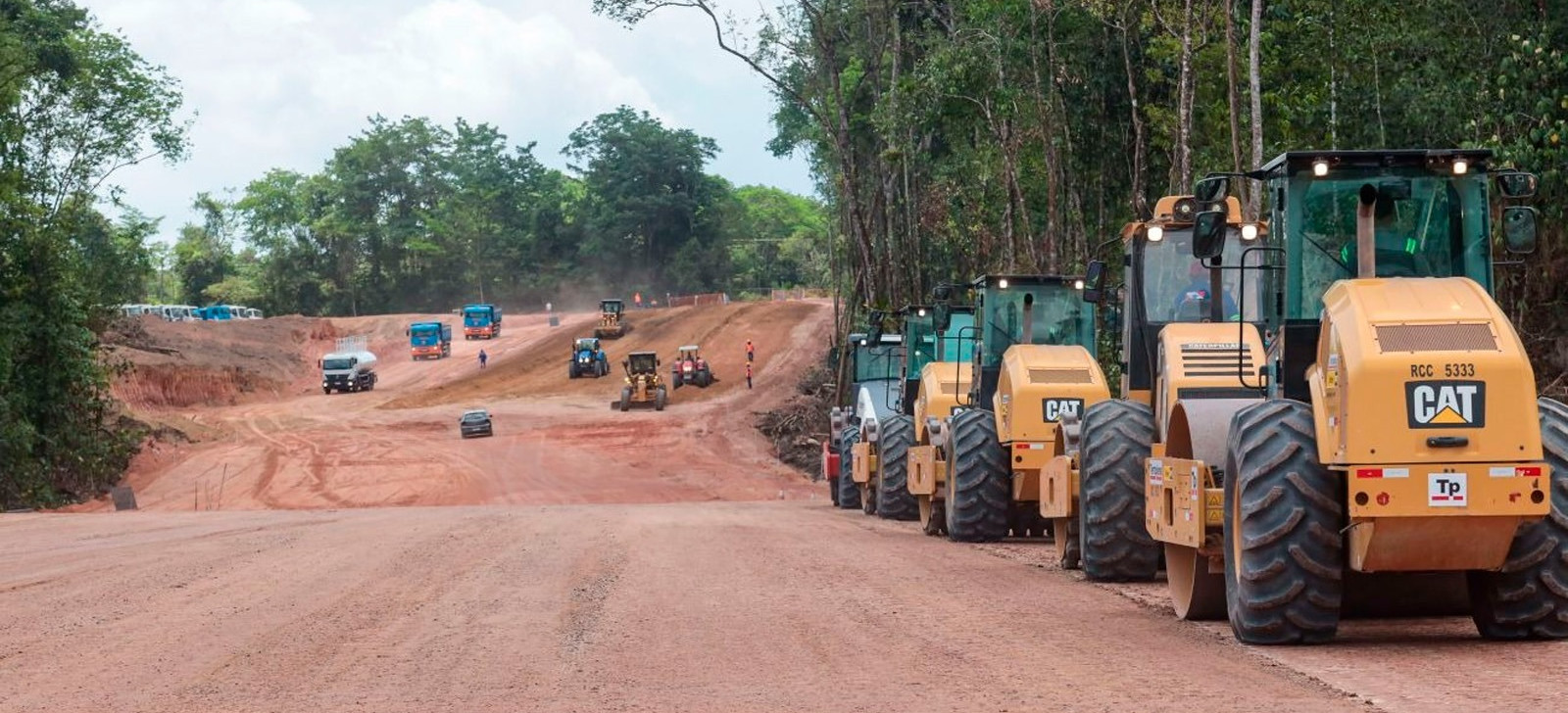Road works in COP30 host city alter ecosystems of 12 rivers and streams
09 de January de 2025

Fabyo Cruz – From Cenarium
BELÉM (PA) – The construction of Liberdade Avenue, planned by the Pará Government with the aim of improving urban mobility in the Belém Metropolitan Region (RMB), crosses 12 bodies of water in the Murutucu, Aurá and Pau Grande basins, according to the Environmental Impact Report of the State Secretariat for the Environment and Sustainability (SEMAS). As construction progresses – with 20% completed and delivery scheduled for November 2025 – experts are calling attention to the environmental and social impacts.
Valdinei Silva, a professor at the Federal Institute of Pará (IFPA) and vice-president of the Brazilian Association of Sanitary and Environmental Engineering (Abes-PA), told CENARIUM that the project represents a significant challenge for the balance between development and sustainability.
“Any intervention in the environment generates an impact. That’s a fact. The question is: what is the intensity of this impact and how can it be mitigated?”, asks Valdinei. He explains that the environmental studies identified points where the highway crosses watercourses, 12 of which are natural and one of which is a pipeline that carries water from the Guamá River to the lakes that supply Belém.

According to him, the available studies show an increase in the movement of solids into watercourses already in the initial phase, caused by deforestation. “When you remove vegetation, the impact is immediate. This increases the concentration of solids and the possibility of contamination, both during the work and after completio”, he explained.
Water quality at risk
Data from the Environmental Impact Study (EIA) shows that the Water Quality Index (IQA) in some areas is already being damaged by activities such as farming and cattle breeding and by the influence of the Aurá dump. However, the groundwater remains within the standards for human consumption.
“The population needs to understand that any intervention in Belém’s water network has consequences. It’s impossible to build infrastructure here without affecting rivers, streams or creeks. But monitoring and environmental compensation must be priorities”, says the professor.
Social control
Valdinei draws attention to the lack of active participation by the communities directly affected. “If the population were properly oriented and trained to monitor the impacts, many problems could be avoided. But there is an imbalance in the process: on the one hand, well-paid technical consultants; on the other, residents without the resources or support to monitor.”

He explains that, in practice, effective social control can delay timetables, which generates resistance. “By the time the population realizes the impact – with machines cutting down trees or rivers being silted up – it’s too late. This monitoring should start from the planning stage”.
Two sides to the project
The 13.3-kilometer Avenida Liberdade will have two lanes of traffic in each direction, ecological cycle paths, solar-powered lighting and six viaducts and bridges. But Valdinei warns: “The impact could be positive or negative. Does it help urban mobility? Yes. But at what environmental and social cost? These are the questions we need to ask ourselves”.
He also stresses the need for continuous monitoring: “The real impact will only be seen with monitoring. This is a commitment that must be made by the government and society as a whole”.
For Valdinei, the main lesson is the need to integrate technical planning, environmental monitoring and community participation: “Environmental impact studies must be used to minimize damage. We can’t ignore the fact that the impacted waters and forests are essential for life in Belém”.
CENARIUM asked Semas for a position on what actions are being taken to minimize the damage. Read the full note sent by the ministry below:
“The Secretariat for the Environment and Sustainability informs us that it monitors potential environmental impacts through frequent inspections of the project area and detailed environmental reports. All actions to mitigate impacts on water bodies and areas directly and indirectly affected are provided for in the Environmental Control Plan. In addition, Semas maintains an active dialog with the communities surrounding the project.”

